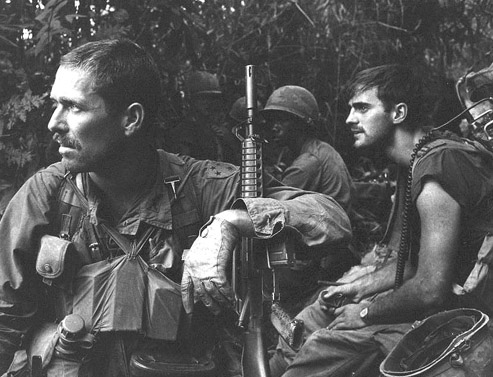"...such stories do not border on treason -- they are treason."

Capt. William H. Gayler (left), company commander of Bravo Co., 4th Bn., 31st Inf., Americal Division, Aug. 28, 1969, during the Hiep Duc Battle.
The Background
In the summer of 1969, the North Vietnamese Army and U.S. forces decided to make control of the Hiep Duc Valley a test of wills. The ensuing two-week battle 35 miles south of Danang was one of the bloodiest of that year. When it was over, more than 400 Americans were wounded and 80 were dead. The American military said more than 1,000 NVA died.
During that late August battle, A.P. reporter Peter Arnett and photographer Horst Faas filed a story about five G.I.s who, for a brief time, refused to fight.
A few days later I arrived at the battle to write stories and shoot photos for Pacific Stars & Stripes.
The story and photos that follow enraged the top brass in the Army. In a speech to military PR people, the Army's chief spokesman in Vietnam, Col. James Campbell, calling Stripes "the Hanoi Herald," said whether my story was true or not "was beside the point." My writing gave aid and comfort to the enemy, adding, "such stories do not border on treason -- they are treason." Campbell was scheduled to become editor of Pacific Stars & Stripes but his intemperate speech cost him that job.